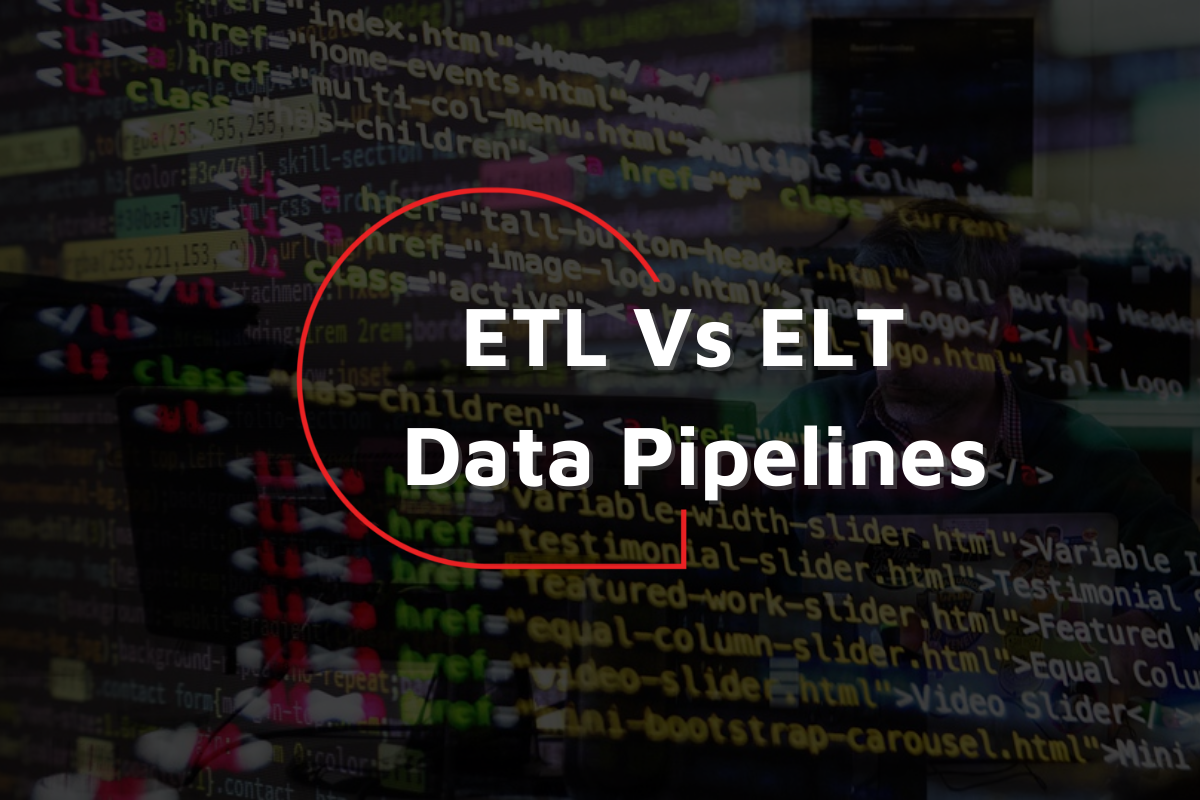ETL Vs ELT data pipeline structure: How do they compare, and how to choose the right structure
1 December 2022 | Noor Khan

Managing your data efficiently means understanding exactly what you are doing, the size of the data involved, and what pipeline structure is going to best suit your needs. Developing your data pipelines is a critical part of your strategic data development and business growth.
ETL (Extract, Transform, and Load) and ELT (Extract, Load, and Transform) sound like they ought to be the same thing, but there are key differences in the way these processes operate.
Structuring and handling your data is a complex task, and you may need to bring in experts who have the skills and the expertise. But whether you are handing control to experts, or developing your data pipelines yourself, you need to understand clearly what is required.
ETL – What is it and what does it do?
As the name suggests, ETL is a set of processes which extracts data from one system, transforms it, and then loads it to its target repository. The function of an ETL pipeline will always work in this specific three stage process.
There are three layers involved in an ETL cycle:
- The staging layer - This is where data is extracted from various structures and stored.
- The data integration Layer - The data is taken from the staging layer and transformed, it is then transferred into database from this layer, and arranged into groups (also known as dimensions), facts, and aggregates.
- The access layer - This layer is used for analytical reporting and end-user access to retrieve the data. For businesses who are looking for data insights that are quick and easily accessible, this is an important factor.
An ETL Pipeline uses these processes to move data from one or more sources into a specific database (such as a data warehouse), where the information can then be used for reporting, analysis, and developing actionable business insights.
ELT - What is it and how does it work?
ELT is another type of data integration, which is similar to ETL, however, the structured process will always run as Extract, Transform, and Load.
This process is used to move data from source systems into other destinations (such as data warehouses). ELT is used to streamline the time-consuming process of moving large amounts of data and works with the raw data after the extraction phase, which is then transformed after it has been loaded.
ETL Vs ELT data pipeline structure - key differences
The biggest difference between the two processes is in the way data is handled. With ETL, the data is transformed before loading it to the destination, whereas ELT delivers raw data directly to the target.
This seemingly small difference between the two processes can impact how much data is retained in a data warehouse, and the speed at which the pipeline is operating, and if you are conducting data migration, how much time and expense is involved.
When you are making your decision, it is important to look at your needs. ETL is generally more appropriate for processing smaller, relational data sets, and ELT provides faster operation for moving large amounts of data. Your specific business and operational needs will inform your decision, but if you are not sure what you should be doing, seeking expert advice is highly recommended.
Ardent data pipeline development service
Data pipelines that are built in a secure, scalable and robust way will help to increase data efficiency, improve data turnaround and help uncover valuable insights from your data. Whether you are looking to develop ETL or ELT pipeline, our high skilled engineers can help. Get in touch to find out more about our data pipeline development services, more insights on whether you should opt for ETL or ELT or to get started on unlocking your data potential.
Ardent Insights

Are you ready to take the lead in driving digital transformation?
Digital transformation is the process of modernizing and digitating business processes with technology that can offer a plethora of benefits including reducing long-term costs, improving productivity and streamlining processes. Despite the benefits, research by McKinsey & Company has found that around 70% of digital transformation projects fail, largely down to employee resistance. If you are [...]

Stateful VS Stateless – What’s right for your application?
Protocols and guidelines are at the heart of data engineering and application development, and the data which is sent using network protocols is broadly divided into stateful vs stateless structures – these rules govern how the data has been formatted, how it sent, and how it is received by other devices (such as endpoints, routers, [...]

Getting data observability done right – Is Monte Carlo the tool for you?
Data observability is all about the ability to understand, diagnose, and manage the health of your data across multiple tools and throughout the entire lifecycle of the data. Ensuring that you have the right operational monitoring and support to provide 24/7 peace of mind is critical to building and growing your company. [...]






